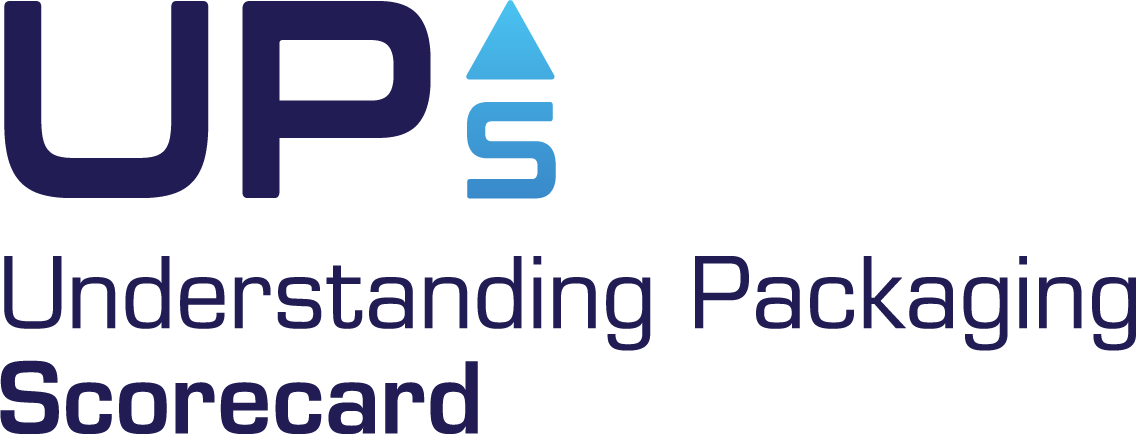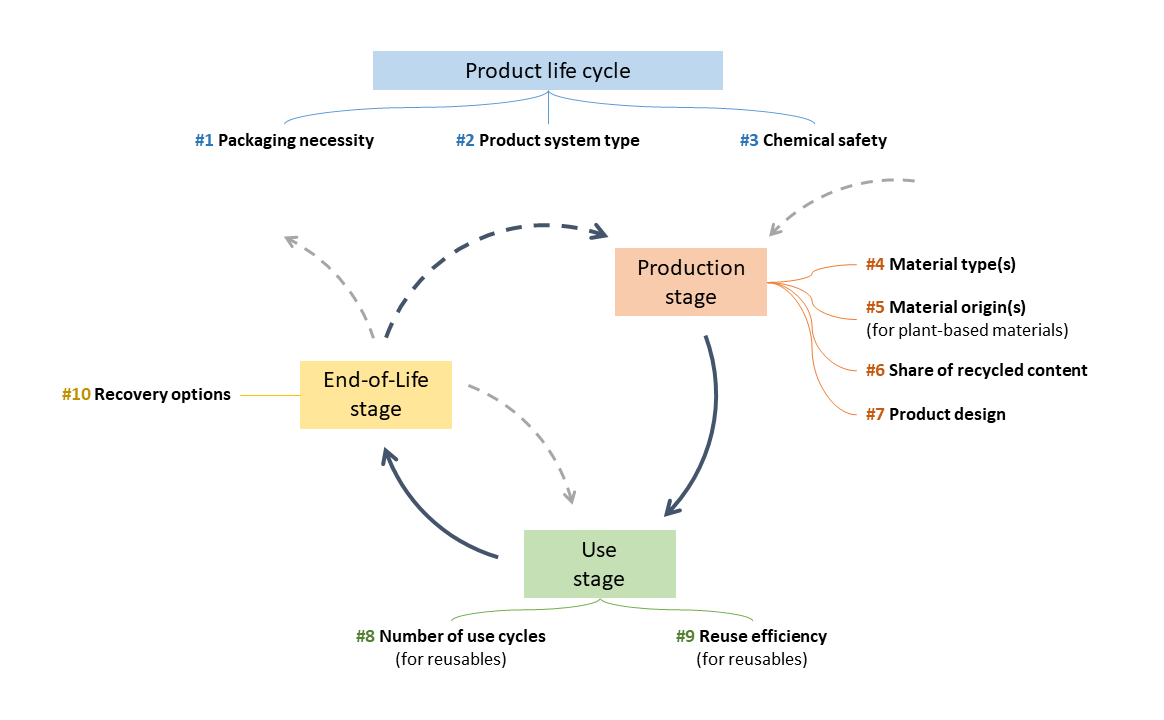It’s clear that the foodware and food packaging we use need to become sustainable. And there is a growing number of (often unclear and unverifiable) green claims being placed on products, such as being recyclable, compostable, bio-based, plastic-free, non-toxic, and low-carbon. The availability of these products on the market makes it clear that they are economically sustainable, but what about their true sustainability across multiple dimensions? In particular, what about their human and environmental health performance: are the existing efforts being made already sufficient? What are the prerequisites and leverage points for good performance in these impact areas, and which types of products perform best?
A holistic assessment is key
In our daily lives, foodware and food packaging are widespread and ubiquitous. They fulfill important functions throughout the life cycle of packaged food. At the same time, the discourse on the associated environmental impacts and the increasingly loud concerns about the associated effects on human health are also becoming omnipresent. Nevertheless, the effects on human and environmental health are rarely considered together during procurement decision-making. Often, just individual impacts such as the contribution to climate change are addressed and assessed. This can lead to a distorted picture or even to wrong conclusions in the search for sustainable packaging.
The key question is: How would a more comprehensive assessment affect the performance of foodware and food packaging products, and what decision support can be derived from it? The Understanding Packaging (UP) Scorecard provides six human and environmental health-related metrics and bridges this gap to enable a more holistic assessment of commonly used foodware and food packaging products. It provides not only holistic product summary scores but also important insights about individual impact areas to identify effective leverage points on the path to procuring truly sustainable food packaging.
Improving the human and environmental health performance of packaging
The UP Scorecard’s science-based methodology and the product scores that result strongly support the paradigm of the waste hierarchy “Reduce, Reuse, Recycle, Recover”. So, if packaging can be omitted, that should be the first step since every packaging used leads to some impact. If the packaging is determined to be essential for a specific use case, the calculated impacts show that it should be reusable in the best case or at least provide some value at its end-of-life (e.g. recyclable or compostable). This helps to keep the product and/or its material in a loop to make the product system more circular. Any circular system, however, must always take into account the chemical safety of products and materials. For more information on circularity in general and how it is addressed in the UP Scorecard, see the previous blog article on circularity in the UP Scorecard.
For typical use cases, the UP Scorecard provides a selection of generic products from a variety of commonly used materials to choose from. It is assumed that all products in a use case serve the same function, i.e. that they provide the user with the same service. The generic products can be customized as needed, and it is even possible to create new products based on the available materials in the tool. Within this assessment and scoring framework, ten key leverage points emerge for improving the human and environmental health performance of foodware and food packaging. By considering these leverage points in your packaging decisions, you can reduce negative impacts on both human health and the environment. Three of the leverage points refer to the entire life cycle of the products, while the other seven refer to specific life cycle stages, i.e., production, use, and end-of-life (see Figure 1).
Figure 1. Leverage points along the product life cycle of foodware and food packaging products to minimize impacts on human and environmental health. Three of the leverage points refer to the entire life cycle, while the others refer to specific life cycle stages.
Key leverage points to consider in order to minimize the human and environmental health impacts of foodware and food packaging:
- Entire life cycle
- Packaging necessity: Is the foodware or food packaging product absolutely essential to use?
- Product system type: Is it possible to use reusable products? Or do they have to be single-use?
- Chemical safety: Are measures in place to prevent the presence of known chemicals of concern in the product and to avoid the migration of chemicals into the food?
- Production stage
- Material type(s): Are materials with lower human and environmental health impacts available and can they be used instead?
- Material origin(s) (for plant-based materials): Does the material used have certification for sustainable sourcing practices?
- Share of recycled content: Can the recycled content in the product be increased (without reducing chemical safety)?
- Product design: Can the mass and/or size of the product be further reduced (without negative effects on sustainable sourcing and/or recoverability)?
- Use stage
- Number of use cycles (for reusables): Can the number of reuses be increased for the product?
- Reuse efficiency (for reusables): Can the collection/washing/redistribution efficiency of the product be further increased?
- End-of-life stage
- Recovery options: Is the product designed for recovery (e.g., recycling/composting) and is there a recovery facility available in the region of use that will accept the product?
These leverage points and their ability to minimize impacts are not always independent of each other. It’s important to consider possible interactions they might have with one another. The UP scorecard helps by providing scores for each impact as well as a summary score, which serves as an easy-to-use reference point for comparing the overall performance of a product relative to all other products in the use case. Effects of different measures on the overall performance of a product can thereby be quickly identified.
Obviously, many more leverage points within and outside the scope of the UP Scorecard can have an influence on the human and environmental health impacts of foodware and food packaging products. Two others not discussed here but also available in the UP Scorecard include:
- Region of production/use: this influences, for example, the available energy mix to manufacture products
- Type of transportation: the transport distance and mode of transport from supplier to user influences the energy required for transporting the products (including carbon emissions)
The influence on the overall product performance from such additional leverage points is expected to be rather small. The UP Scorecard recognizes that it cannot take into account all possible leverage points and impact areas, and it is committed to being as simple as possible to use. Therefore, it rather focuses on including the most important leverage points that have the greatest influence on reducing the overall human and environmental health impacts of a product. Additional leverage points and impact areas may be added to future versions of the tool if sufficient data is made publicly available.
Identifying the best packaging options
In general, the human and environmental health impacts of a product are very context-specific, and the customization of a product can strongly influence its performance. However, the results of the UP Scorecard’s assessment across all products reveal some very clear trends that can help in fundamentally selecting the best products:
- Reusable products consistently show the best performance (with a summary score generally above 50 (out of 100))
- Single-use metal, paper and fiber, and glass-based products show the next best performance (with a summary score generally between 30 and 60)
- Single-use plastic-based products show the worst performance (with a summary score generally below 40)
Why does the UP Scorecard normally score reusable products better than single-use products? The most important reason is the scorecard’s strong methodological focus on achieving a more circular future in line with the “Reduce, Reuse, Recycle, Recover” paradigm, benefiting both human and environmental health. Regarding the sustainable sourcing and recoverability scores, products score best when they have as little virgin material as possible needed for packaging production and when as little material as possible is disposed of after use. This makes reusable products the best option in most cases, as it enables (re)utilization not only at the material level but even at the product level. This increases the value retention of products and their materials.
There are two further reasons reusable products generally score higher. One is that reuse often performs better in terms of life cycle-based metrics (especially climate and water use) if implemented effectively, e.g., by ensuring as many use cycles as possible and an efficient reuse system. The other is that the materials of the commonly available reusable products included in the UP Scorecard often contain little plastic (which has a positive effect on the plastic pollution score) and have a high inertness, i.e., a low likeliness of chemical migration into food (which has a positive effect on the chemicals of concern score).
But again, the specific, customizable aspects of a product within the UP Scorecard can strongly influence its overall performance. Especially when comparing reusables vs. single-use products, it is important to keep in mind that impacts are not just attributable to the product itself, but also to the entire food system it operates within and enables. A shift from the current single-use, linear system to a circular one based on reuse clearly promises to reduce impacts on human and environmental health, but these changes are greater than just the individual foodware or food packaging product. Until now, the UP Scorecard only allows for the assessment of individual products, but the ability to score entire systems (e.g., businesses, business units) is currently under development.
Conclusions and looking forward
The UP Scorecard provides an easy-to-use assessment of common foodware and food packaging products along six human and environmental health metrics. This holistic approach allows for comparing the influence of different leverage points along the value chain and their interactions. The UP Scorecard’s results illustrate that there is not one product that has the lowest impact across all dimensions and for all possible applications. Instead, the performance of available products is highly context-dependent, and the best option for a specific application is often a compromise between different targets.
Nevertheless, the results within the UP Scorecard provide some clear fundamental guidelines as to which materials and product types are best suited to minimize impacts on human and environmental health. Reusables take the lead almost every time they are an option, followed by single-use products – with single-use plastics having the worst overall performance.
For decision-making, considering the ten leverage points presented here along the product life cycle can help improve packaging performance and identify the best available options. Thanks to science-based tools such as the UP Scorecard, ultimately the biggest challenge is no longer identifying which foodware and food packaging products are best for human and environmental health, but rather actually making the switch from underperforming, status quo products on the market to holistically more sustainable options.





